Dow Ends on a Positive Note Despite Inflation Concerns; Tech Stocks Drive Nasdaq's 1.3% Gain | Daily Market Analysis
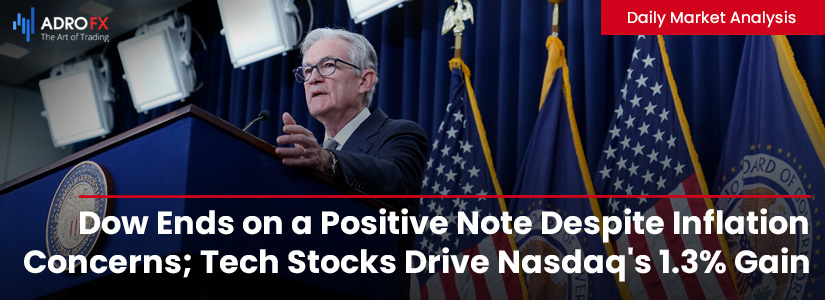
Key events:
- UK - GDP (MoM) (Dec)
- UK - GDP (YoY) (Q4)
- USA - Core Retail Sales (MoM) (Jan)
- USA - Initial Jobless Claims
- USA - Philadelphia Fed Manufacturing Index (Feb)
- USA - Retail Sales (MoM) (Jan)
The Dow concluded Wednesday on a positive note, witnessing a rebound as investors seized the opportunity to buy stocks following a previous day's sell-off prompted by a stronger-than-expected US inflation report.
Closing at 16:00 ET, the Dow Jones Industrial Average rose by 0.4% or 151 points, while the S&P 500 gained 0.9%, and the Nasdaq Composite, driven by tech stocks, experienced a 1.3% increase.
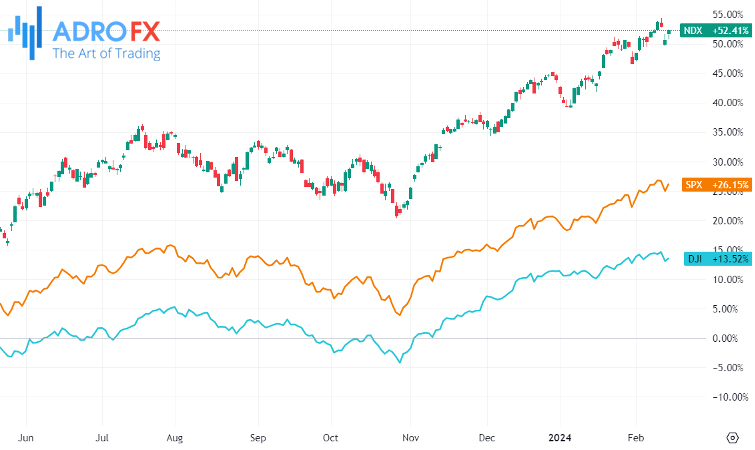
Federal Reserve Vice Chair Michael Barr expressed confidence that inflation is gradually slowing toward the 2% target but acknowledged the likelihood of a "bumpy" path ahead.
Nvidia (NASDAQ: NVDA) demonstrated strength with a 2.5% increase, surpassing Alphabet (NASDAQ: GOOGL) in market capitalization, now valued at $1.825 trillion. The AI chip giant is set to report quarterly results next week.
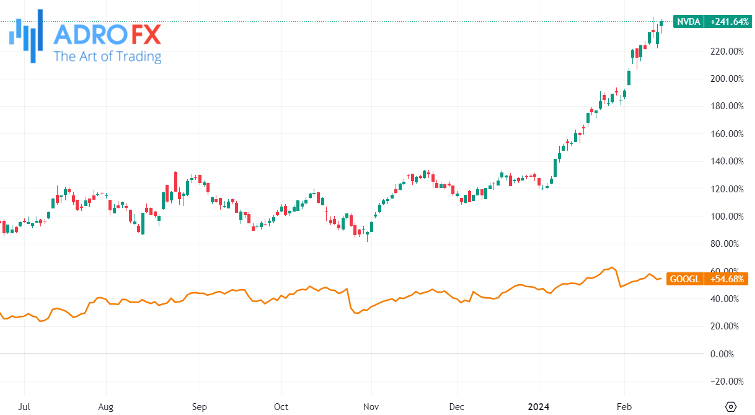
Yields briefly declined after comments from Chicago Fed President Austan Goolsbee, who suggested that the Fed's trajectory toward the 2% inflation target would remain intact even if price increases temporarily exceed expectations. Goolsbee advised caution against delaying interest rate cuts.
Market expectations indicate a 78.5% likelihood of a Fed cut by at least 25 basis points in June, according to CME's FedWatch Tool. Meanwhile, expectations for a May cut decreased to 38.5%, down from 63.7% a week ago.
Tuesday's US inflation data showed a 3.1% annual increase in the consumer price index, surpassing forecasts of a 2.9% rise.
The UK's Office for National Statistics is slated to release Q4 Gross Domestic Product prints on Thursday. The Bank of England expects a gradual GDP growth uptick in the coming quarters, potentially preventing a "technical recession" if the GDP meets consensus.
BoE officials indicated that about two-thirds of the impact of heightened interest rates on GDP levels have already materialized. Investors anticipate the BoE to join other central banks in easing its policy rates, with the September meeting seen as a probable starting point for the easing cycle, distinguishing it from the earlier moves by the Federal Reserve and the European Central Bank.
The US Dollar Index is striving to recover from recent losses, fluctuating around 104.70 during Thursday's Asian session. The decrease in US Treasury yields, driven by an improved risk appetite, is applying downward pressure on the US Dollar, with current 2-year and 10-year US yields at 4.55% and 4.23%, respectively. Economic events such as Retail Sales data and Initial Jobless Claims are under close scrutiny on Thursday.
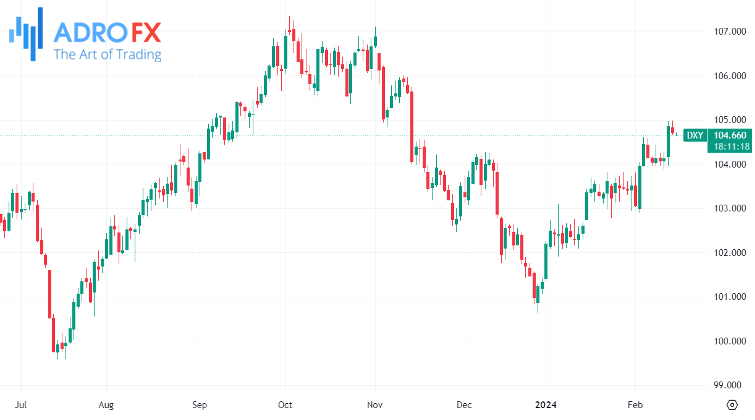
The Japanese Yen is capitalizing on its recent recovery from a three-month low, maintaining a positive bias for the second consecutive day against the US Dollar. The USD/JPY pair's surge beyond the psychological mark of 150.00 following the US CPI prompted verbal intervention from Japanese authorities. The positive sentiment for the JPY is influenced by geopolitical risks in the Middle East and Japan's entry into a technical recession in Q4, despite an unexpected economic contraction during the same period. Uncertainty persists regarding the Bank of Japan's exit from its negative interest rates policy.
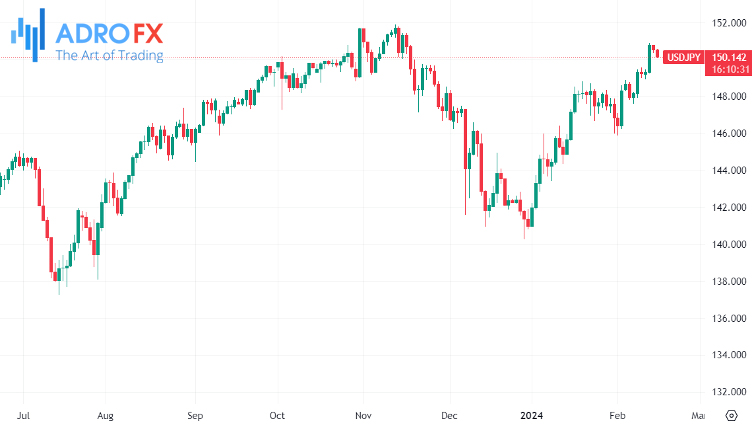
The Australian Dollar initially saw gains but later turned negative following discouraging Australian Employment data on Thursday. Nevertheless, the AUD/USD pair managed to make early Asian advances, supported by a weakening US Dollar and increased risk appetite. The Australian Dollar's upward momentum was bolstered by the S&P/ASX 200 Index surging above 7,600, reflecting a Wall Street rebound. Governor Michele Bullock's comments from the Reserve Bank of Australia emphasized persistent inflation, particularly in services, while also noting a gradual decline in inflationary pressures.
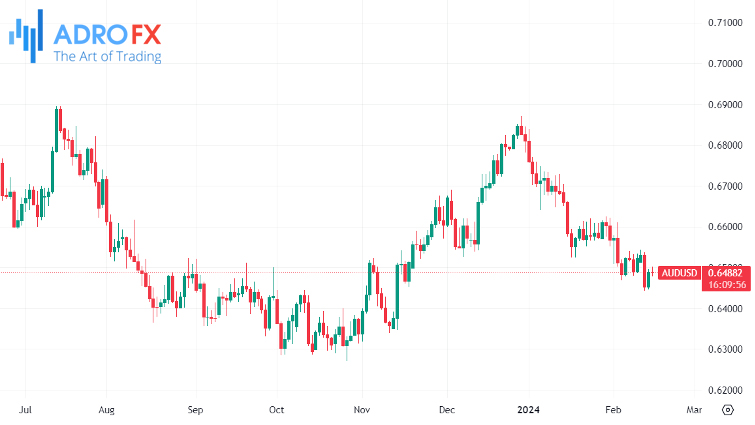
The price of gold continues its lateral consolidation, maintaining a position just above a two-month low recorded the day before. The release of US inflation data, which exceeded expectations on Tuesday, has shifted projections for the first Federal Reserve interest rate cut to the mid-year, creating a challenging environment for the non-yielding precious metal.
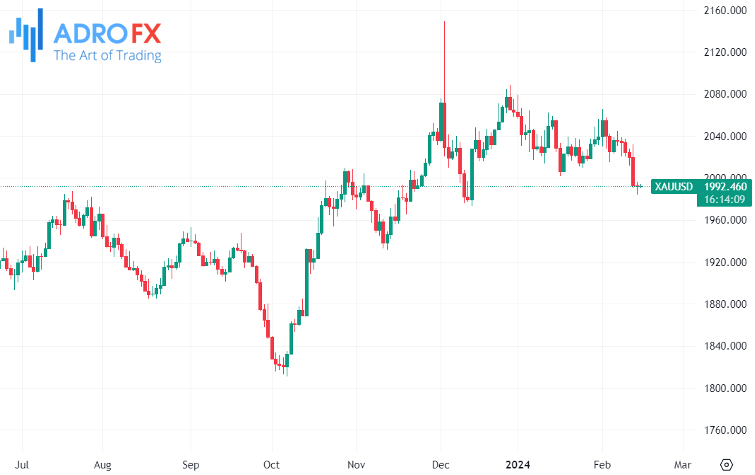
Despite the hindrance posed by hawkish Fed expectations and declining US Treasury bond yields on USD bulls, factors such as geopolitical tensions and a lack of substantial buying interest, in addition to the aftermath of the US CPI report, suggest a downside risk for gold. Any potential recovery might be perceived as a selling opportunity, as traders remain on the lookout for fresh impetus from US macroeconomic data.









